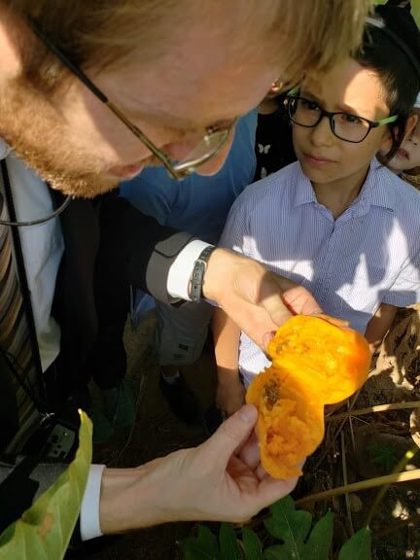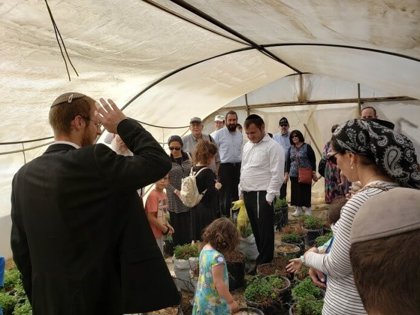
Elul 5779, Issue no. 11
Shehechiyanu – Practical Information
Which fruits (and vegetables) can we make a shehechiyanu on for the second night of Rosh Hashana?
In today’s age, the concept of “seasonal fruit” is constantly changing. On which fruit should one say shehechiyanu today?
This article features a list of more than 100 common and rare fruits and vegetables and notes the halachic status of each one. See here.
Q&A
Shehechiyanu on a fresh pineapple on the second night of Rosh Hashana
Rabbi Moshe Bloom
The blessing shehechianu vehigiyanu lazeman haze is a blessing thanking G-d that we have arrived at the season when a particular fruit is available (eating an apple, available year-round, for the first time does not warrant this blessing). The pineapple plant produces fruit throughout the year, so it is not considered a seasonal fruit. The time of blooming depends on the date it was planted, not on the season. For this reason, it is possible to eat fresh pineapple throughout the year. During the winter, however, bloom encouraging agents (chemical sprays) are required, the fruit is of lesser quality and more expensive, which is why it is not readily available in most supermarkets at this time.
Additional methods of extending sales time for pineapples includes using different strains and imports. Note that today (Elul 5779) it is against the law to import pineapples with their crowns, due to the concern that the base of the crown can carry pests. So if you see a whole pineapple with its crown intact, you can be certain that it grew in Israel. If the crown is cut off, then it most likely is an import.
In light of the current situation, shehechiyanu should not be said on fresh pineapple.
The Pomegranate
The Number of Seeds in a Pomegranate
We customarily eat a pomegranate on Rosh Hashana night, usually on the second night in order to say shehechiyanu. How many seeds do pomegranates have? See here.
The Pomegranate
In honor of Rosh Hashana, we published a comprehensive article in the Five Towns newspaper on the pomegranate: starting from sources in the Tanach and Mishnaic and Talmudic literature, through agricultural and agronomic aspects. We invite you to read the article, here.
Emunat Itecha 125
The eighth issue of Emunat Itecha with English abstracts is currently being sent to thousands of subscribers all over the country. In the current issue, we translated three halachic responsa based on questions posed to the rabbis at Torah VeHa'aretz Institute.
Etrog Orchard Tour
Until Sukkot, we are holding tours of the etrog orchard in Kfar Maimon. Mehadrin etrogim can be purchased onsite directly from the grower. The tours are geared for large groups and also for families. For details, please contact us.
Tour at Torah VeHa'aretz Institute – Beis Tefillah Yonah Avraham (BTYA RBS)
One Friday afternoon in Elul, a full bus came all the way from Ramat Beit Shemesh with men, women, and children to visit Torah VeHa'artez Institute. The unique timing was because the community wanted to visit on a day off, but not on Friday morning since the children wanted to come too. After a brief lecture, we went outside for a tour that included: shemita hothouses, intermediate plants (unclear classification as vegetable or tree) including papaya and goji berry, the less-familiar of the birkot hare'ach (blessings on pleasant smells): hanoten rei'ach tov bapeirot, and an etrog tree. We saw a grafted tree and discussed the halachic ramifications of grafting.
Everyone returned home an hour-and-a-half before Shabbat—tired but happy!


